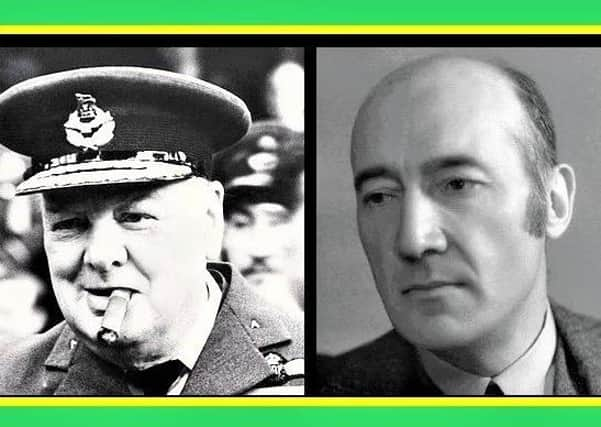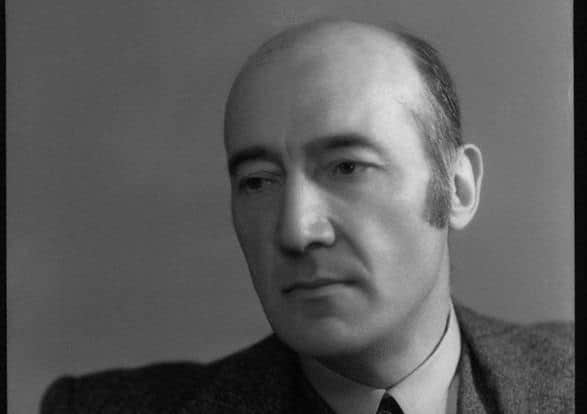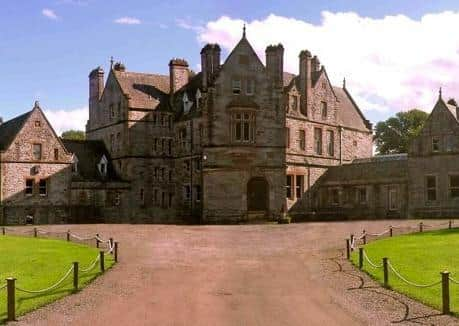Remembering Shane Leslie – cousin of Churchill, son of UVF chief, and staunch Irish nationalist


For four centuries the Leslie family of Glaslough have been the most prominent Ulster-Scots family in Co Monaghan.
In the 19th century the Leslies were a major land-owning family, holding 70,000 acres spread over five Ulster counties and Meath.
Advertisement
Hide AdAdvertisement
Hide AdBishop Leslie was the first member of the family to settle in Ulster as Bishop of Raphoe in 1633, having previously been Bishop of the Isles. In 1638 the Bishop married Catherine, the 18-year-old daughter of Alexander Cunningham, the Dean of Raphoe. They had 10 children, of whom John, the eldest surviving son, became Dean of Dromore. In 1664 (or 1665), as Bishop of Clogher, the bishop fell in love with Glaslough and purchased the place. He died there in 1671 aged 100. The bishop’s sixth son Charles achieved significance as a leading Non-Juror clergyman and intellectual.


The Leslies had the reputation of being good landlords. In the Famine era they even suspended the payment of rents and organised ‘relief work’ which consisted of the construction of a wall around their Glaslough estate which is still known locally as he ‘Famine Wall’. There is no record of the Leslies ever having evicted a tenant in that or any other period.
Moving swiftly on to the 20th century, we encounter Shane Leslie (the 3rd Baronet), the eldest son of Sir John Leslie, the 2nd Baronet, and Leonie, Lady Leslie. Lady Leslie was the youngest daughter of Leonard Jerome of New York and sister of Lady Randolph Churchill. Thus Winston Churchill was Shane’s cousin.
Shane (christened John) was born on September 24, 1885 in London. He spent his childhood in Co Monaghan and was educated at Eton College and later at King’s College, Cambridge.
Advertisement
Hide AdAdvertisement
Hide AdWhile at Cambridge he converted to Roman Catholicism and became an Irish nationalist. (It was then that he began to use an Irish form of his name which he always pronounced as ‘Shaun’.) After graduating in 1907, he travelled to Russia to meet and stay with Leo Tolstoy at Yasnaya Polyana where he absorbed some of Tolstoy’s idiosyncratic ideas. He regarded Tolstoy as the greatest influence on his life. Because of Tolstoy he decided against getting married and owning property.


Winston Churchill introduced Shane to John Redmond, the leader of the Irish Parliamentary Party. As a result Shane contested the ultra-marginal constituency of Londonderry City in the two general elections of 1910. In January he was defeated by the Marquess of Hamilton who had a majority of 57. In December Hamilton increased his majority to 105.
Having failed to become an MP, Shane moved to America, where he worked with Bourke Cockran, the American politician, orator and a great friend of Churchill’s. Abandoning his Tolstoyan resolve, he even got married. Marjorie, his bride was the youngest daughter of Henry Clay Ide, judge of the Vermont Supreme Court and later governor-general of the Philippines. She was also Bourke Cockran’s sister-in-law.
The marriage may not have been a great success. Marjorie described his female friends as ‘Shane’s band of alley-cats’. Although a brilliant conversationalist, he was taciturn in his own home and showed little interest in his three children. ‘It was not that he disliked us’, wrote his daughter Anita, ‘he would just have preferred if we had not existed.’
Advertisement
Hide AdAdvertisement
Hide AdDuring the third Home Rule crisis Sir John Leslie was the commander of the UVF in Co Monaghan, while Shane drilled with the Nationalist Volunteers.
Shane’s brother Norman was a captain in the prestigious Rifle Brigade. When war broke out in 1914 he exhibited an almost unbelievable heartlessness about early casualties. Norman may just have had fewer illusions about the nature of warfare than many of his more sensitive contemporaries. He was one of the many who died, and early on too. On October 18 1914, he was killed by a German sniper while on reconnaissance at Armentières.
Shane did not volunteer as a soldier but drove an ambulance in France instead.
After a nervous breakdown on his way to the Dardanelles, he returned to the United States where he worked to counter Irish opposition to America’s entry into the war. He urged the British government not to execute the leaders of the 1916 rebellion and to grant immediate Home Rule.
Advertisement
Hide AdAdvertisement
Hide AdBeing an impractical dreamer, Shane probably remained a Redmondite Home Ruler all his life. He lived both in London and Glaslough. Despite his nationalist commitment, Shane gave the impression of being far more at home in England than in Ireland. Conversely, his unionist parents were probably happiest in Ireland. In 1939 he even joined the Home Guard.
The border was a source of vexation to him. At the end of the 1940s he made a few anti-partitionist speeches but desisted when he discovered that the English found the subject a crushing bore.
His friendship with Hazel Lavery, Michael Collins, Lord Dunsany, Oliver St John Gogarty, Eamon de Valera and Sean T O’Kelly suggest that even if he was not a major player in Irish politics, he had at least some sort of role on the margins.
For example, he was on periphery of the negotiations surrounding the Anglo–Irish treaty of December 1921. Almost 20 years later Eamon de Valera sought his assistance in appealing to Churchill to prevent the execution of IRA men who had planted bombs in England in 1939.
Advertisement
Hide AdAdvertisement
Hide AdShane was a prolific author. He wrote four volumes of autobiography, four novels, nine collections of poetry and a daunting collection of biographies and biographical studies.
Unfortunately his four volumes of autobiography are signally unhelpful in getting to grips with the man. For example, there is no attempt to explain his conversion to Rome.
He inherited the baronetcy in 1944 but, abiding by his Tolstoyan principles on this occasion, not the property. Marjorie died in 1951, after which he married Iris, daughter of Charles Miskin Laing.
Sir Shane Leslie died on August 14 1971 in Hove. Anita Leslie followed in her father’s footsteps, becoming an accomplished writer and biographer.
MORE FROM THE NEWS LETTER:
Advertisement
Hide AdAdvertisement
Hide AdA message from the Editor:
Thank you for reading this story on our website. While I have your attention, I also have an important request to make of you.
Advertisement
Hide AdAdvertisement
Hide AdWith the coronavirus lockdown having a major impact on many of our advertisers — and consequently the revenue we receive — we are more reliant than ever on you taking out a digital subscription.
Subscribe to newsletter.co.uk and enjoy unlimited access to the best Northern Ireland and UK news and information online and on our app. With a digital subscription, you can read more than 5 articles, see fewer ads, enjoy faster load times, and get access to exclusive newsletters and content. Visit https://www.newsletter.co.uk/subscriptions now to sign up.
Our journalism costs money and we rely on advertising, print and digital revenues to help to support them. By supporting us, we are able to support you in providing trusted, fact-checked content for this website.
Ben Lowry, acting editor